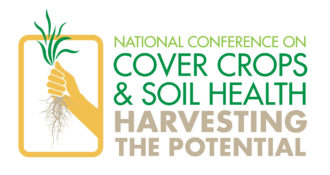Session recordings on this page include:
- Introduction to Cover Crops
- Selecting and Establishing Cover Crops
- Terminating Cover Crops Plus Strategies for Planting a Cash Crop Following Cover Crops
Introduction to Cover Crops
Are you new to cover crops? Our experts stand ready to answer your questions as a beginner during this session. Start the conference with basic information about cover crops including:
- What is a cover crop?
- What goals can cover crops help farmers meet?
- What problems on the farm and in the community can cover crops solve?
- How are cover crops selected, established, and terminated?
Sarah Carlson, Practical Farmers of Iowa (PDF)
Will Glazik, Illinois farmer
Selecting and Establishing Cover Crops
There are many considerations in selecting and establishing cover crops to meet your goals. This session will guide you on selecting cover crop species to meet your goals and address your concerns. Receive information about the different ways to seed cover crops and learn innovative ways farmers are ensuring their establishment.
- Learn to select cover crop species based on meeting your goals and addressing resource concerns
- Hear about less common cover crop species and where they may fit
- Discover the establishment method that best suits your land and operation
Eileen Kladivko, Purdue University (PDF)
Rodney Rulon, Indiana farmer (PDF)
Terminating Cover Crops Plus Strategies for Planting a Cash Crop Following Cover Crops
Timing of cover crop termination can determine soil health benefits and ease of establishing a following cash crop. Your termination approach can also affect the other benefits you get out of your cover crops including weed control in your following cash crop system. This session will delve into:
- Various cover crop termination methods including herbicides, crimping, etc.
- Succeeding cash crop planting strategies for success
Dan DeSutter, Indiana farmer (PDF)
Josh Payne, Missouri farmer (PDF)
The following session recordings are available:
